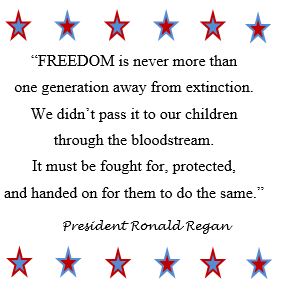“Hacksaw Ridge” is a 2016 biographical war drama film about the World War II experiences of Desmond Doss, an American pacifist combat medic who was a Seventh-day Adventist Christian, who refused to carry or use a firearm or weapons of any kind. Doss became the first conscientious objector to be awarded the Medal of Honor, for service above and beyond the call of duty during the Battle of Okinawa.
The movie is a must see movie. Below are several comments from the movie. The official citation for the Congressional Medal of Honor follows.
- The trailer states that Desmond T. Doss was the only soldier to serve in a front-line capacity without carrying a weapon. In WWII, Korea, and Vietnam, the military gave several Seventh-Day Adventists the status 1A-Q, willing to serve, but not to carry a weapon in combat. A number of Quakers volunteered for service in WWI.
- Mel Gibson stated there were aspects of Hacksaw Ridge that were true but that he couldn’t include in the film because he felt people wouldn’t believe they were true: Doss stepped on a grenade to save his buddies and was hit by shrapnel, but as he was being carried away by medics he saw another soldier hurt; since Doss himself was a medic he jumped off his stretcher and treated that soldier and told the medics to take care of other wounded soldiers; he then crawled back to safety while being shot at by enemy snipers.
- Desmond T. Doss was not wounded and evacuated in a daylight assault at Hacksaw Ridge. He was wounded a couple of weeks later in the Okinawa Campaign during a night attack near Shuri. As per his Medal of Honor citation, he was wounded in the legs by a grenade but had to wait five hours before stretcher bearers could reach him, during which time he dressed his own wounds. While being carried back to safety by three stretcher bearers, they were attacked by a Japanese tank. Doss crawled off the stretcher to a more seriously wounded man and insisted the others evacuate that soldier and then return for him. While waiting for the stretcher to return, he was shot by a sniper as he was being carried by another soldier. This caused a compound fracture on his arm, for which he improvised a splint using a rifle stock. He then crawled 300 yards to an Aid Station for treatment.
- While at the end of the movie it says Desmond saved 75 men by directly lowering them from the escarpment, he also treated around 55 more that were able to retreat without assistance after treatment during the battle. Over the course of his tour, which lasted approximately three weeks, he rescued nearly 300 men.
*********************
DOSS, DESMOND T.
Rank and Organization: Private First Class, U.S. Army, Medical Detachment, 307th Infantry, 77th Infantry Division
Place and Date: Near Urasoe Mura, Okinawa, Ryukyu Islands, 29 April-21 May 1945
Entered service at: Lynchburg, Va.
G.O. No.: 97, 1 November 1945
Citation: He was a company aid man when the 1st Battalion assaulted a jagged escarpment 400 feet high. As our troops gained the summit, a heavy concentration of artillery, mortar and machine gun fire crashed into them, inflicting approximately 75 casualties and driving the others back. Pfc. Doss refused to seek cover and remained in the fire-swept area with the many stricken, carrying them 1 by 1 to the edge of the escarpment and there lowering them on a rope-supported litter down the face of a cliff to friendly hands. On 2 May, he exposed himself to heavy rifle and mortar fire in rescuing a wounded man 200 yards forward of the lines on the same escarpment; and 2 days later he treated 4 men who had been cut down while assaulting a strongly defended cave, advancing through a shower of grenades to within 8 yards of enemy forces in a cave’s mouth, where he dressed his comrades’ wounds before making 4 separate trips under fire to evacuate them to safety. On 5 May, he unhesitatingly braved enemy shelling and small arms fire to assist an artillery officer. He applied bandages, moved his patient to a spot that offered protection from small arms fire and, while artillery and mortar shells fell close by, painstakingly administered plasma. Later that day, when an American was severely wounded by fire from a cave, Pfc. Doss crawled to him where he had fallen 25 feet from the enemy position, rendered aid, and carried him 100 yards to safety while continually exposed to enemy fire. On 21 May, in a night attack on high ground near Shuri, he remained in exposed territory while the rest of his company took cover, fearlessly risking the chance that he would be mistaken for an infiltrating Japanese and giving aid to the injured until he was himself seriously wounded in the legs by the explosion of a grenade. Rather than call another aid man from cover, he cared for his own injuries and waited 5 hours before litter bearers reached him and started carrying him to cover. The trio was caught in an enemy tank attack and Pfc. Doss, seeing a more critically wounded man nearby, crawled off the litter; and directed the bearers to give their first attention to the other man. Awaiting the litter bearers’ return, he was again struck, this time suffering a compound fracture of 1 arm. With magnificent fortitude he bound a rifle stock to his shattered arm as a splint and then crawled 300 yards over rough terrain to the aid station. Through his outstanding bravery and unflinching determination in the face of desperately dangerous conditions Pfc. Doss saved the lives of many soldiers. His name became a symbol throughout the 77th Infantry Division for outstanding gallantry far above and beyond the call of duty.

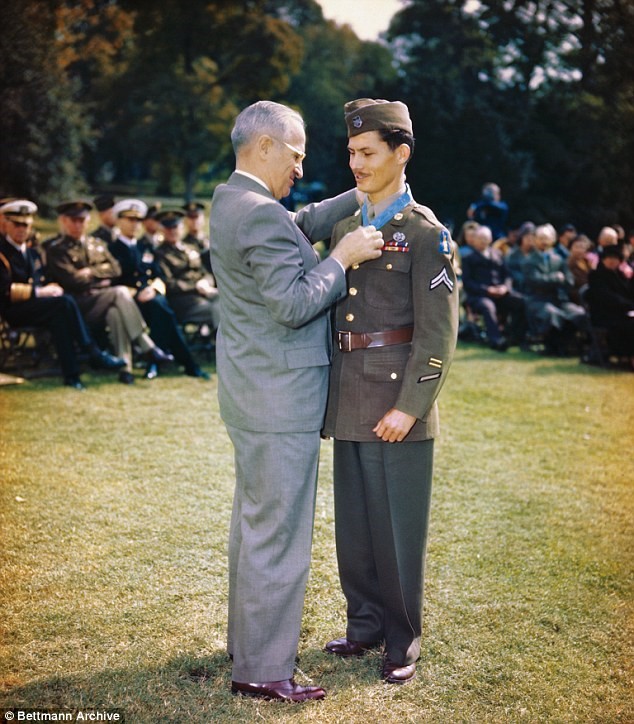
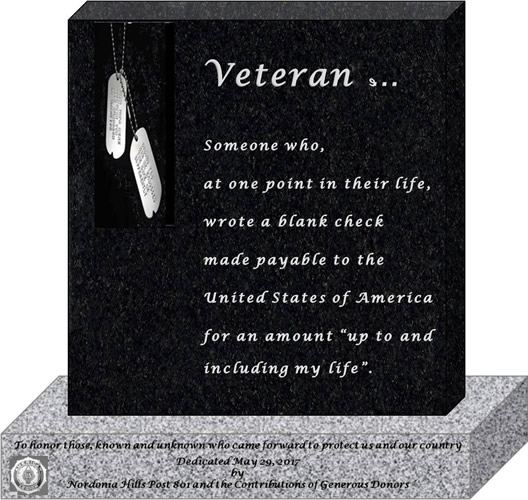
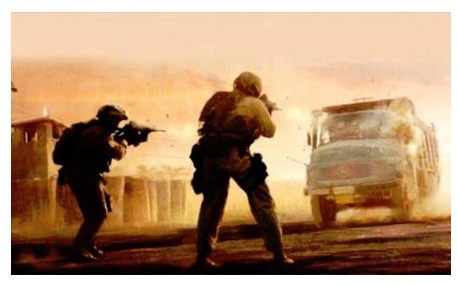
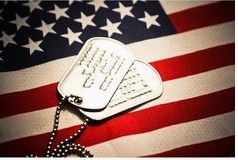
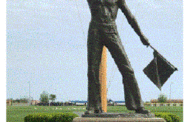
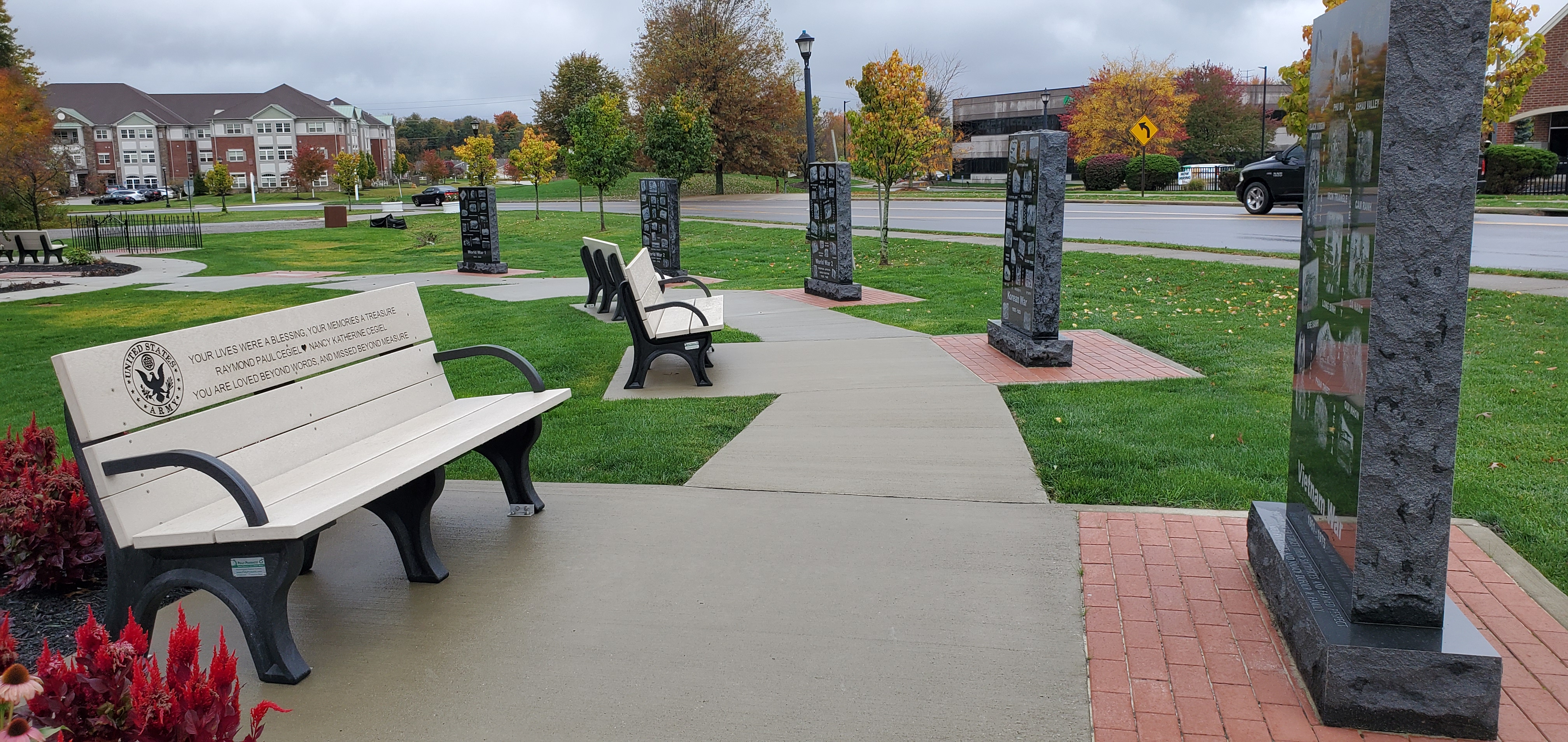 Click image to enlarge
Click image to enlarge
